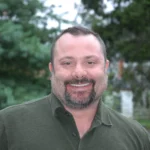Originally published in TEACH Magazine, 50th Anniversary of the Decriminalization of Homosexuality in Canada Special Issue, 2019
By Adam Stone
It isn’t easy to teach the history of homosexuality in Canada. How do you communicate to modern kids the notion that something so widely accepted today was illegal within living memory? That less than a generation ago, the relationships that today are celebrated on TV and in popular song were literally classed as criminal?
It was just over 50 years ago, in 1965, that the Supreme Court of Canada upheld a ruling that labelled Everett Klippert a “dangerous sexual offender” for having sex with other men. That’s ancient history in the eyes of a child.
Adam Stone is a seasoned journalist with 20+ years’ experience. He covers education, technology, government, and the military, along with diverse other topics.


